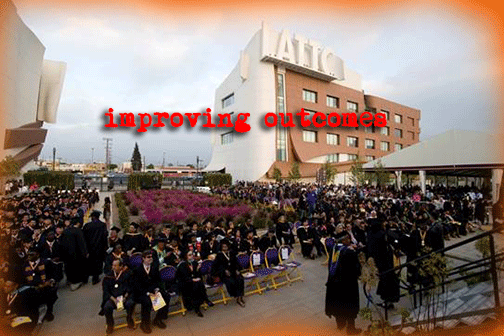MINING THE “UNTAPPED POTENTIAL” OF CALIFORNIA’S FOSTER CARE KIDS
Some dynamic programs help California’s former foster youths succeed in school…but more resources are desperately needed
With a drug addict mother, and no father around, Eniqua Sampson had the kind of turbulent childhood that lands many kids in foster care. Now twenty-two, Eniqua hopes to beat the dismal odds that California foster youth face regarding education outcomes. She plans to finish college and land a steady job to provide her three-year-old son with the secure, untroubled upbringing she never knew.
Eniqua is an engaging young woman whose face lights up when she talks about her little boy. She says that, despite the lack of stability in her family life, she has always had a strong determination to succeed in school. She graduated high school when she was seven months pregnant, and did not hesitate to launch right into college classes as a brand new mother. “School is what keeps me going,” she says.
At LA Trade Technical College, Eniqua is one of 167 current and former foster youths receiving assistance toward their academic goals through the school’s comprehensive Guardian Scholars Program.
Programs like LATTC’s can be crucial in determining whether young people affected by the foster care system complete post-secondary education. Statewide, only 58% of 12th grade foster kids graduated high school in 2009/2010—a rate lower than kids with low socioeconomic status or any other at-risk student group, according to a recent report by the Center for the Future of Teaching and Learning at WestEd in San Francisco. A 2011 study by the Hilton Foundation found that only 2% of the 2,388 LA County former foster youth tracked by researchers received an associate’s degree. (In 2012, Los Angeles County had by far the largest population of foster youths in the state at 18,523—more than the next six most populous counties combined.)
Advocates say that these grim statistics are both unacceptable—and entirely avoidable. “When foster youths are given adequate support through college, they persist and achieve at or better than their peers in the general population,” says Daniel Heimpel, founder of Fostering Media Connections. “What does that tell you? We are leaving a wealth of potential untapped because our school systems and our post-secondary education systems are not geared toward raising expectations for foster youth and ensuring that they have a fair shot at success. And that is stupid.”
A 2013 report from the Stuart Foundation, which has helped fund the Guardian Scholars Program across the state, found that California foster youths who were involved in comprehensive support programs like GSP were three times more likely to persist in college than the national average.
GSP helps students persevere and graduate by providing such services as career advice, academic mentoring and counseling, tutoring, and assistance with community resources for housing and transportation needs.
The program has proved successful for many young adults transitioning out of the child welfare system, but there are still some troublesome gaps in support. For instance, Eniqua needs childcare assistance to be able to attend classes. And, although childcare is available, she had to jump through a series of bureaucratic hoops to get her son approved, only to find this merely got his name on a formidable waiting list. Eniqua says she has been on the list for a about a year. “It’ll be time for me to put him in preschool before I make it off that list,” she says. It is extremely challenging for Eniqua to find someone to babysit her son during the day. On two occasions when she had no other options, she brought him to class with her. “I got kicked out both times for being a disturbance,” she says.
The number of higher education programs for foster youths is growing in LA County and across the state. According to California College Pathways, 112 community colleges in California have at least one designated foster youth liaison (thanks to the Foster Youth Success Initiative), and 80 campuses have support programs like GSP. To really reverse years of bleak educational outcome statistics, advocates say more funding is needed to provide vital resources for youths like Eniqua who are bursting with potential. Heimpel says, “Throughout the lives of children who go through the system, we make a big investment. Why does this investment stop at making them safe…why don’t we invest in making them leaders?”


Quien iba a pensar?